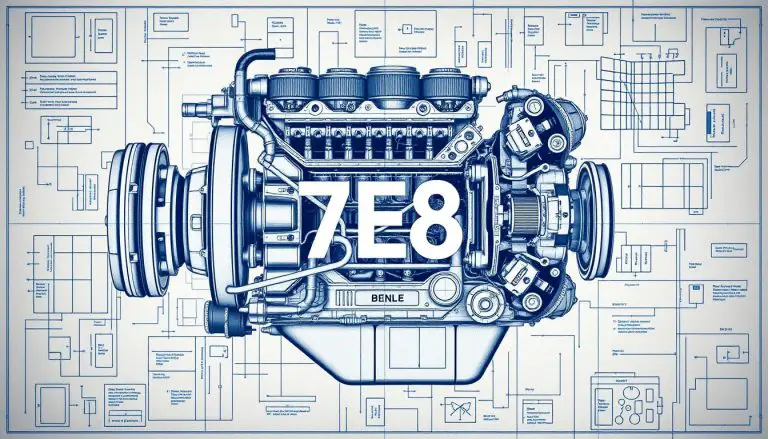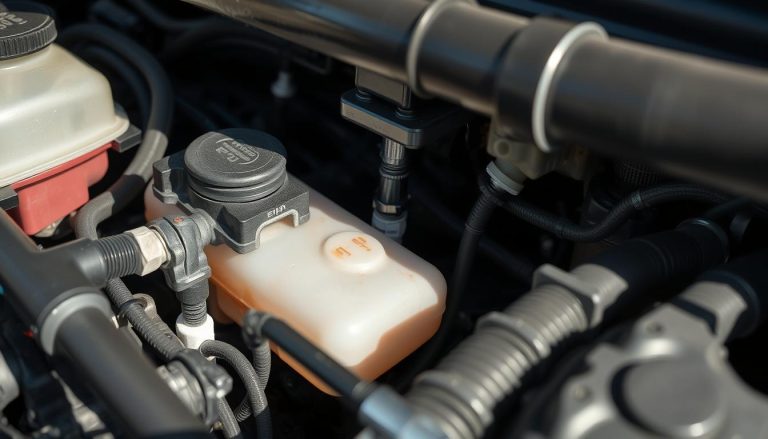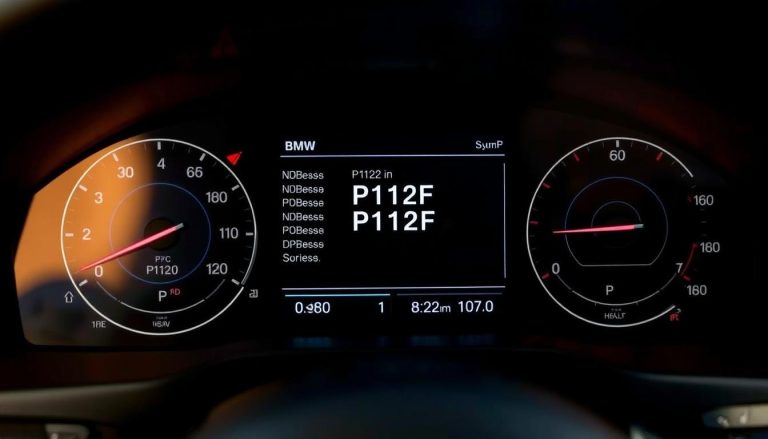Have you ever seen the check engine light flicker on your dashboard, only to be met with a cryptic code like P0320? This specific trouble code can send shivers down any vehicle owner’s spine, as it points to potential issues within the ignition or distributor engine speed input circuit.
Understanding what this code means and how it affects your car is crucial for maintaining its performance and longevity. Let’s dive into the nitty-gritty of the P0320 code—its causes, symptoms, diagnostic steps, and effective solutions.
What does the P0320 code mean?
The P0320 code is a diagnostic trouble code (DTC) that indicates an issue with the ignition or distributor engine speed input circuit. Specifically, it points to problems in how the engine control module (ECM) receives signals regarding the engine’s RPM.
When this code triggers, it often signifies that there’s a disruption in communication between the crankshaft position sensor and the ECM. This can lead to improper timing of fuel injection and spark, affecting your vehicle’s performance.
Essentially, if your car struggles to maintain power or shows erratic behavior while driving, this code might be at play. Understanding its implications helps you address potential issues before they escalate into more severe damage.
What parts can be affected by P0320 code ?
The P0320 code primarily points to issues with the ignition system and engine speed input. Key components that can be affected include the crankshaft position sensor. This sensor monitors the position of the crankshaft, which is crucial for proper engine timing.
Another critical part is the camshaft position sensor. If this component malfunctions, it can lead to incorrect data being sent to the engine control unit (ECU), further complicating performance issues.
Wiring and connectors are also often at risk when dealing with a P0320 code. Damaged wires or loose connections can disrupt signals between sensors and the ECU.
An aging or failing ignition coil may contribute to problems associated with this code. A compromised coil can affect spark generation, resulting in misfires and reduced engine efficiency.
What are the possible causes of a P0320 code?
Several factors can trigger a P0320 code, often linking back to issues within the ignition or distributor systems. A faulty crankshaft position sensor is a primary suspect, as it plays a crucial role in signaling engine speed.
Wiring problems can also be culprits. Damaged or corroded wires may disrupt signals between components, leading to incorrect readings.
Additionally, poor connections at terminals can create intermittent faults that activate the code.
In some cases, malfunctioning modules like the Engine Control Module (ECM) might misinterpret data from sensors, resulting in erroneous codes appearing on your dashboard.
Mechanical failures such as timing belt issues could impact how efficiently these systems work together. Identifying specific causes requires careful diagnosis to ensure proper repairs are made.
What are the common symptoms of a P0320 code?
When you encounter a P0320 code, your vehicle may exhibit several noticeable symptoms. The most common signs include engine misfires and rough idling, which can create a frustrating driving experience.
You might also notice poor acceleration when pressing the gas pedal. This lack of power can be alarming, especially during highway merging or overtaking situations.
Another symptom is an illuminated check engine light on your dashboard. This warning signal prompts you to investigate further into your vehicle’s health.
In some cases, the car may have difficulty starting or stall unexpectedly. These issues not only disrupt daily commutes but can also pose safety risks on the road.
Listening for unusual sounds from under the hood is essential too; knocking or pinging noises could indicate underlying problems related to this code.
What are the diagnostic steps for a P0320 code?
To diagnose a P0320 code, start with an OBD-II scanner. This tool will help you confirm the presence of the code and check for additional trouble codes.
Next, inspect the wiring harness and connectors related to the ignition or distributor engine speed input circuit. Look for signs of damage such as fraying, corrosion, or loose connections.
After that, test the sensor itself using a multimeter. Measure its resistance to ensure it falls within manufacturer specifications.
If everything appears normal but the code persists, examine other components like the crankshaft position sensor or camshaft position sensor. These parts can influence engine speed readings too.
Clear any fault codes and take your vehicle for a test drive to see if the P0320 reappears. Monitoring how your vehicle responds during this process can provide vital insights into ongoing issues.
How serious Is the P0320 Code? Can I continue driving with the P0320 code?
The P0320 code indicates a problem with the ignition or distributor engine speed input circuit. This can lead to potential issues with engine performance.
Driving with this code illuminated is not advisable. You may experience reduced power, stalling, or misfires. These symptoms could compromise your safety on the road.
Ignoring the P0320 code might worsen the situation. Other components could become affected if you delay repairs. It’s best to address it sooner rather than later.
If you’re unsure about your vehicle’s condition when seeing this code, it’s wise to consult a mechanic immediately. They can provide insights into any underlying issues that need attention before they escalate further.
What are the repair solutions for a P0320 – Ignition/Distributor Engine Speed Input Circuit ?
Repairing a P0320 code often involves several steps to ensure accurate resolution. Start by inspecting the wiring and connectors associated with the ignition or distributor engine speed input circuit. Look for signs of fraying, corrosion, or loose connections.
If the wiring appears intact, testing the crankshaft position sensor is next. This component plays a crucial role in relaying engine speed data to the ECU. Replacing a malfunctioning sensor can resolve many issues linked to this code.
Another area to check is the ignition coil and other related components like spark plugs and wires. Faulty parts here could disrupt engine performance as well.
If these inspections reveal no faults, it might be necessary to conduct an ECU reset after repairs are made. Ensuring that all systems are calibrated correctly helps avoid future occurrences of error codes like P0320.
How long and How much does it cost to diagnose and repair a P0320 code?
Diagnosing a P0320 code typically takes about one to two hours at an automotive shop. The mechanic will connect a diagnostic scanner to your vehicle’s onboard computer, which identifies the issue behind the error code.
The labor costs for this service generally range from $75 to $150 per hour, depending on the location and expertise of the technician.
Once diagnosed, repairs can vary significantly in cost. If it requires simple fixes like replacing a damaged wire or connector, you might spend between $100 and $300 total. However, if there are more extensive issues such as faulty ignition components or distributor replacement, expenses could soar up to $1,000 or more.
Always consider getting multiple quotes from different shops for transparency and potential savings. Remember that investing in proper diagnosis now can save you money down the line by preventing further damage to your vehicle.
How can I avoid a P0320 code?
To avoid a P0320 code, regular vehicle maintenance is essential. Make sure to follow your car’s recommended service schedule. This includes timely oil changes, filter replacements, and ignition system inspections.
Pay attention to the quality of fuel you use. Opt for top-tier gasoline that meets your vehicle’s specifications. Poor-quality fuel can lead to misfires and affect engine performance.
Additionally, keep an eye on wiring and connectors related to the ignition system. Inspect them for signs of wear or corrosion regularly. Clean any dirt or grime from these components as needed.
Consider using diagnostic tools periodically. They can help identify potential issues before they become serious problems, saving you time and money in the long run. By being proactive about your vehicle’s health, you can greatly reduce the risk of encountering a P0320 code down the road.
What happens if you ignore a P0320 code?
Ignoring a P0320 code can lead to significant issues with your vehicle’s performance. The fault relates to the ignition or distributor engine speed input circuit, which plays a crucial role in how your engine runs.
When this code is present, it may result in misfires and stalling. As you continue driving without addressing the issue, you might experience reduced power and acceleration. This can affect your ability to merge onto highways safely.
Moreover, prolonged neglect could damage other components of the ignition system or even the engine itself. Repair costs tend to escalate as more parts are affected over time.
Your fuel efficiency may also decline due to an inefficient combustion process caused by the faulty signal from the ignition system. Ignoring these warnings not only puts stress on your wallet but also jeopardizes your safety on the road.
Is the P0320 code specific to certain car makes or models?
The P0320 code can occur in a variety of vehicles, but it isn’t exclusive to any specific makes or models. Many manufacturers have designed their engines with similar ignition and distributor systems, making this issue fairly common across the automotive industry.
However, some brands may experience the P0320 code more frequently than others due to unique wiring configurations or electronic control unit (ECU) designs. For instance, certain Ford and Chevrolet models are often noted for having issues related to engine speed input circuits.
It’s also important to consider that age and wear-and-tear can impact different vehicles differently. Older cars might be more susceptible due to deteriorating components over time. Regular maintenance plays a crucial role in preventing such codes from popping up regardless of make or model.
What other codes may be related to P0320?
When dealing with the P0320 code, it’s important to be aware of other related trouble codes that may appear. These can include:
– **P0335**: Crankshaft Position Sensor A Circuit Malfunction
– **P0340**: Camshaft Position Sensor A Circuit Malfunction
– **P0720**: Output Speed Sensor Circuit Malfunction
These codes often co-exist with the P0320 because they all relate to engine speed and timing. Diagnosing these codes alongside P0320 can provide a more comprehensive understanding of your vehicle’s issues.
Addressing multiple related codes at once can save time and money in repairs, as well as ensure your vehicle runs smoothly. Keeping an eye on these potential trouble spots is crucial for maintaining optimal performance and avoiding further complications down the line.


